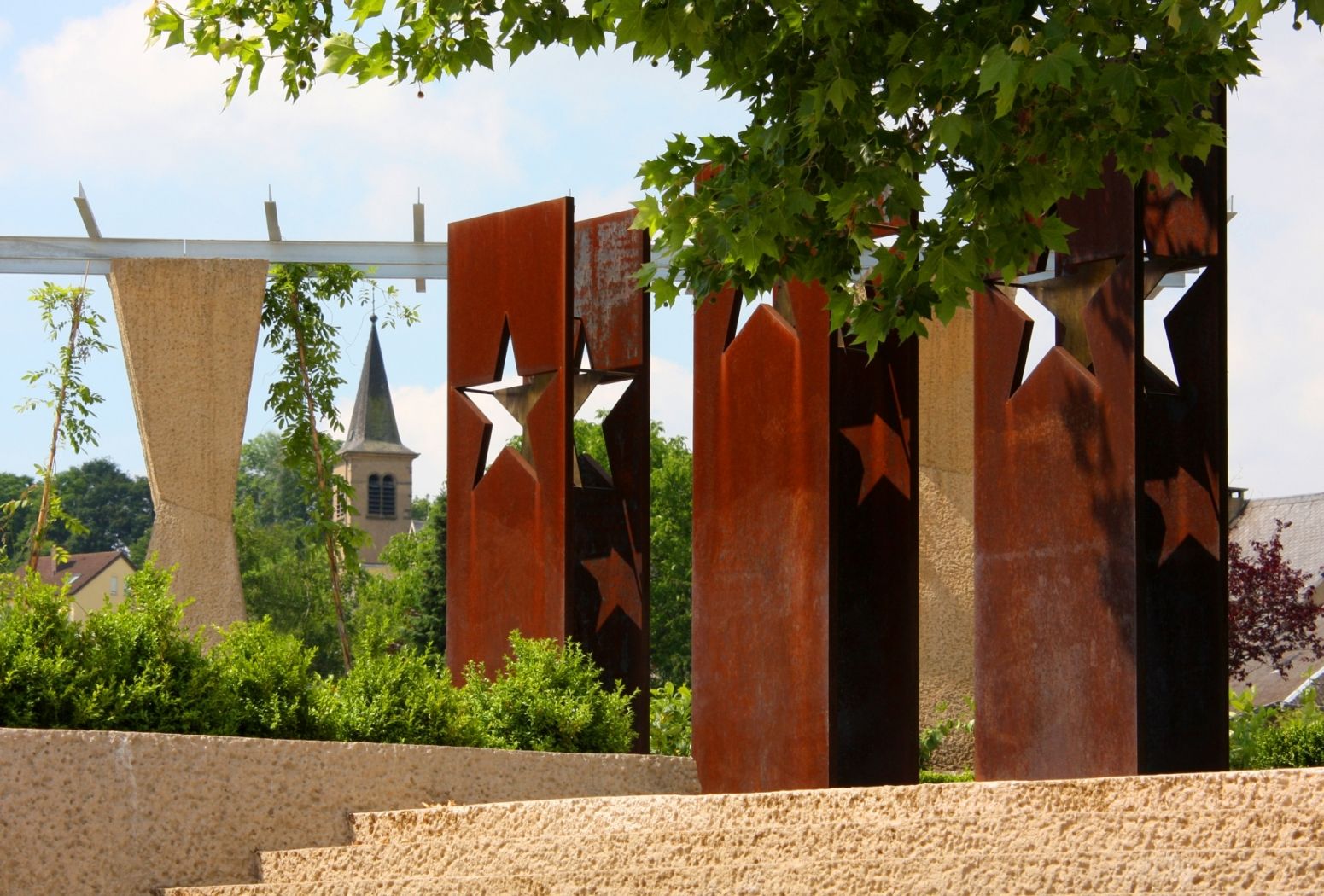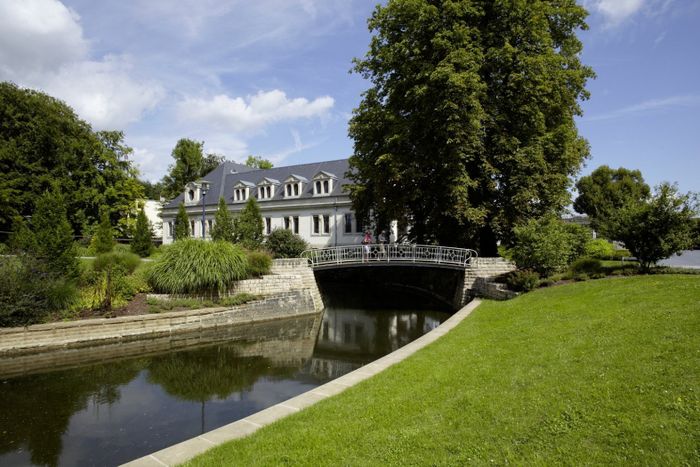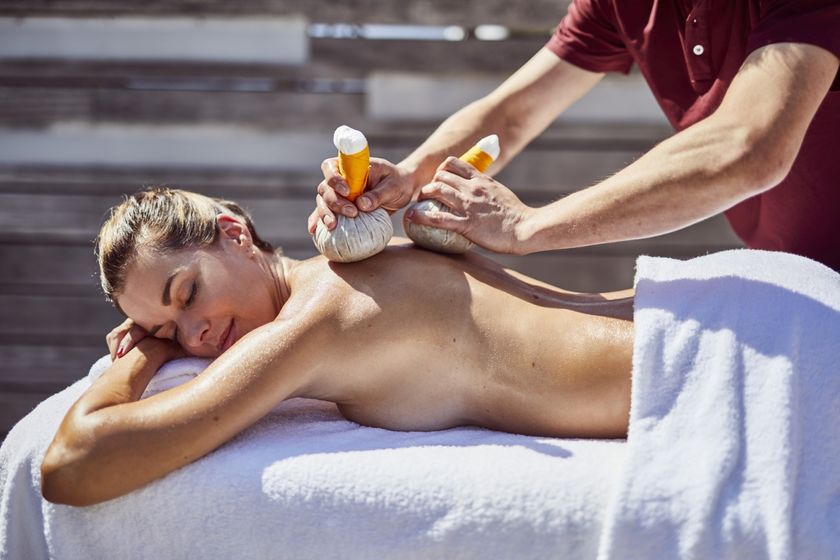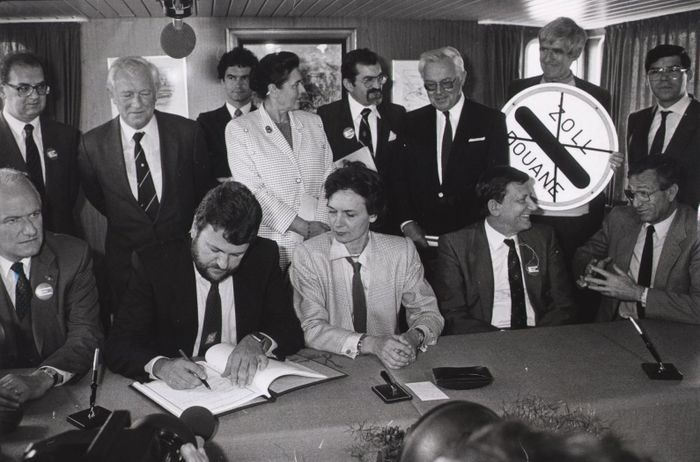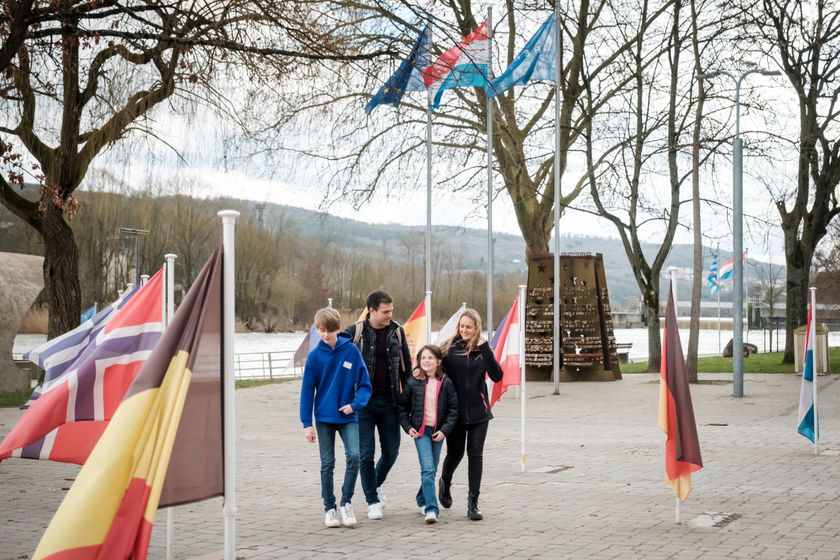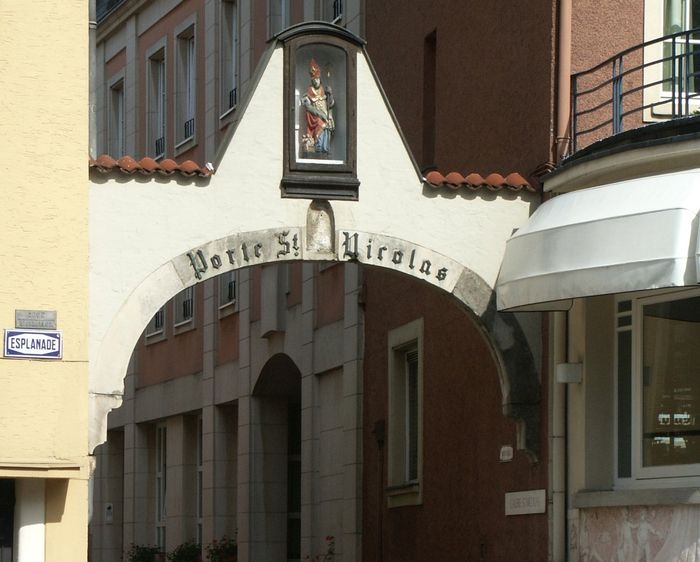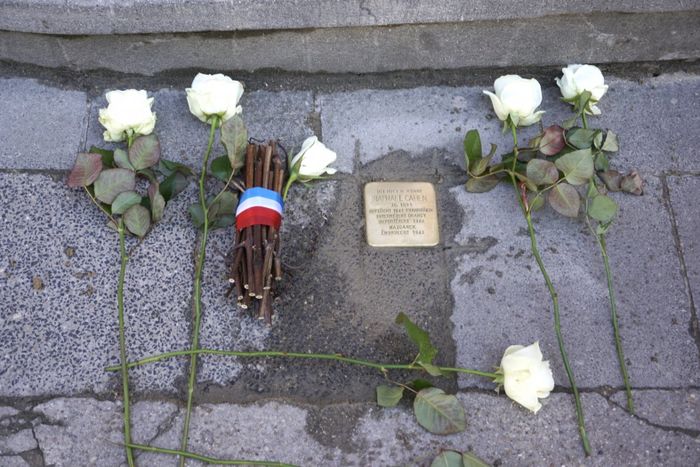The first thermal baths opened in Mondorf-les-Bains in June 1847. This spa was acquired by the state in 1886, eventually becoming the “Domaine Thermal” (link) we know today.
The rising tide of anti-Semitism in Germany and Austria in the late 19th and early 20th centuries even affected entrance policy for health spas in these countries. In Mondorf-les-Bains Jewish clients were welcomed in line with Luxembourg’s long tradition of openness. In 1871, the poet and author, Victor Hugo, had also been one of the famous guests in Mondorf, even before he decided to live in Luxembourg as a political refugee. Luxembourg, as a neutral State welcomed also, in a humanist spirit, all those who fled religious persecution during the “Kulturkampf” in Germany, or all the people rejecting the annexation of Alsace and Lorraine to Germany in 1870.
A synagogue opened in Mondorf in 1907. Build in the Secessionist style the sanctuary survived destruction during the Nazi occupation, and was recently restored by the Schemel-Wirtz architectural practice. Now a cultural centre, it is part of the town’s rich Art Nouveau architectural heritage.
German Jews came more frequently to Mondorf in the 1930s after the Nazis made anti-Semitic persecution state policy. The Luxembourgish spa was near Germany, but part of a neutral State. This was also to the benefit of Mondorf, resulting in three hotels (Bristol, Hemmendinger and Gittler) being opened to cater principally for Jewish guests, including the serving of kosher food. By 1935, 53 Jews lived in the town.
This exodus helped to bolster Mondorf’s reputation as a town of culture, with several great Jewish artists paying visits. The performances of the celebrated Polish pianist Arthur Rubinstein are still spoken about today.
Mondorf also played a role bringing war-criminals to justice after 1945. No fewer than 59 leading members of the Nazi regime were held here at the Palace Hotel while awaiting the start of the Nuremberg war crimes trials. Most famous were Hermann Göring, Joachim von Ribbentrop and Gerd von Rundstedt. Also at the Palace Hotel (which was briefly known as “Central Continental Prisoner of War Enclosure No. 32”) the celebrated early films detailing the horrors of the death camps were first shown to the convicts. Also, the first pre-trial interviews with Göring took place in Mondorf. They were conducted by Douglas Kelleyn, an American army intelligence officer and chief psychiatrist at Nuremberg prison.
There are several reminders of this spa town’s role in history. Illustrated panels in the Mondorf Domaine Thermal describe many of these events and personal stories.
There are also 11 “stolpersteine” (literally “stumbling stones”): brass plates set in the pavements marking the homes of murdered Jewish people and members of the anti-fascist resistance. The memorials were created by the German artist Gunter Demning, and feature the victims’ names and brief biographical details. They remember the names and life-dates of the 53 Jews living in Mondorf-les-Bains in 1935, as well as the tragedy these people lived.
